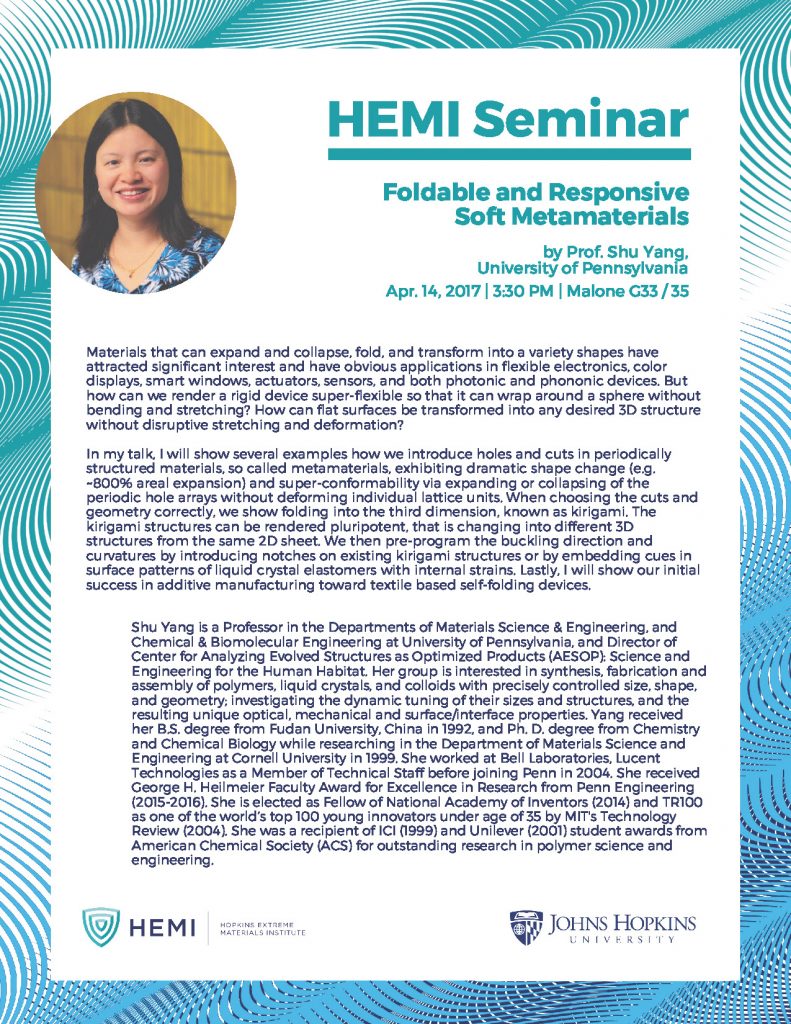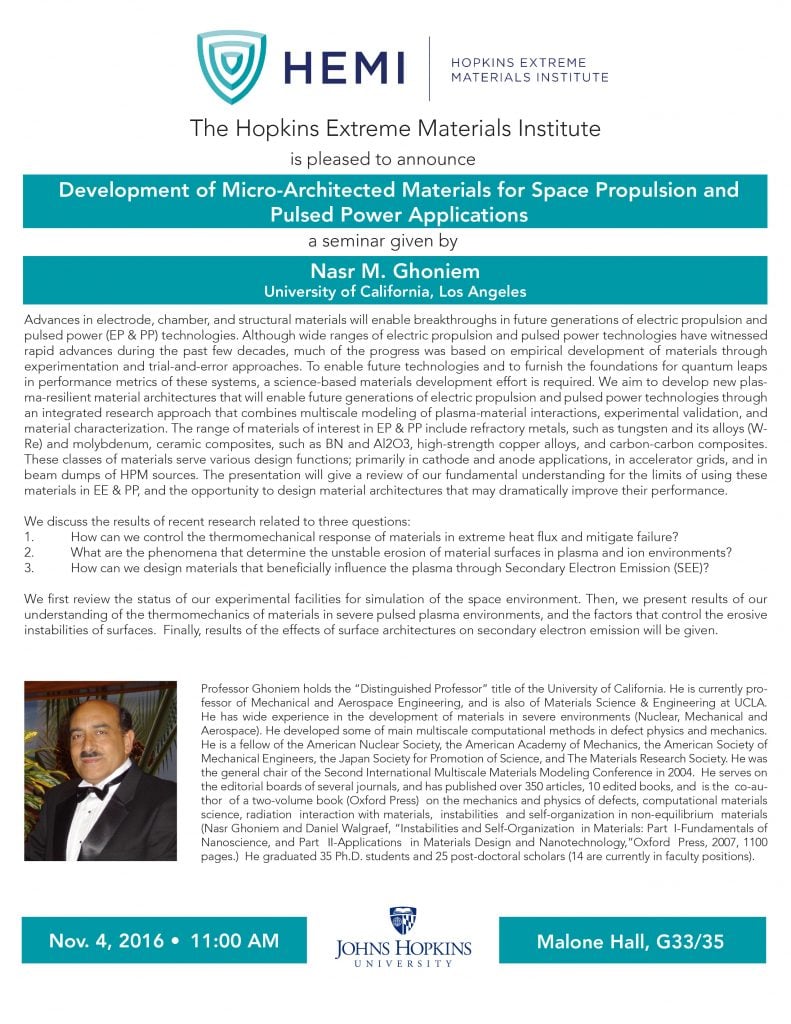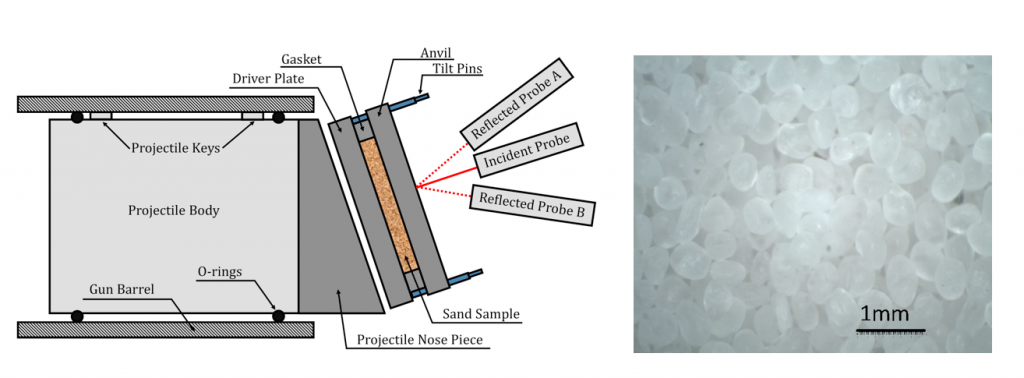Foldable and Responsive Soft Metamaterials
Shu Yang
Department of Materials Science and Engineering, University of Pennsylvania
Materials that can expand and collapse, fold, and transform into a variety shapes have attracted significant interest and have obvious applications in flexible electronics, color displays, smart windows, actuators, sensors, and both photonic and phononic devices. But how can we render a rigid device super-flexible so that it can wrap around a sphere without bending and stretching? How can flat surfaces be transformed into any desired 3D structure without disruptive stretching and deformation?
In my talk, I will show several examples how we introduce holes and cuts in periodically structured materials, so called metamaterials, exhibiting dramatic shape change (e.g. ~800% areal expansion) and super-conformability via expanding or collapsing of the periodic hole arrays without deforming individual lattice units. When choosing the cuts and geometry correctly, we show folding into the third dimension, known as kirigami. The kirigami structures can be rendered pluripotent, that is changing into different 3D structures from the same 2D sheet. We then pre-program the buckling direction and curvatures by introducing notches on existing kirigami structures or by embedding cues in surface patterns of liquid crystal elastomers with internal strains. Lastly, I will show our initial success in additive manufacturing toward textile based self-folding devices.
Seminar will be held at 3:30 PM in Malone Hall G 33/35.







